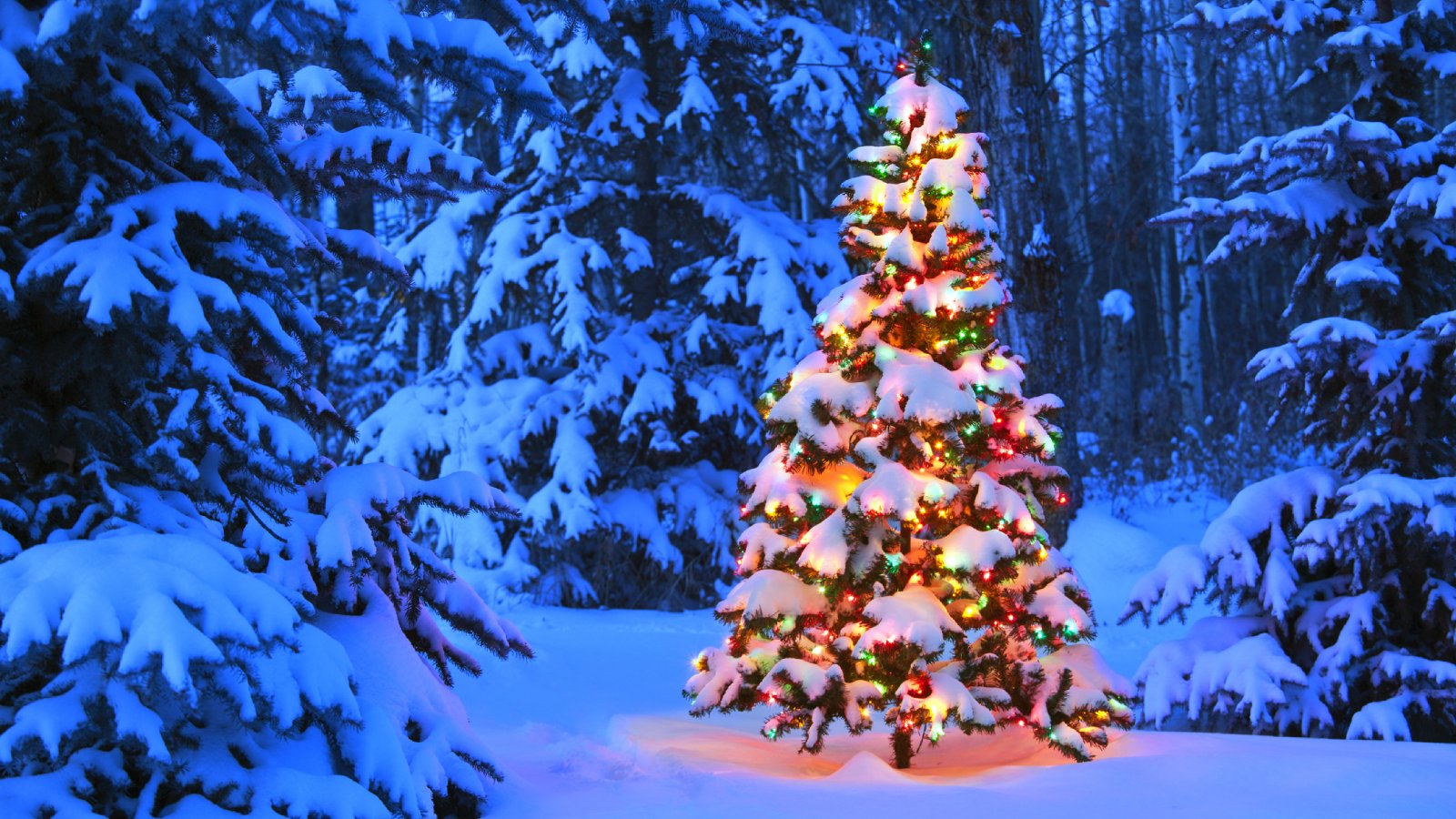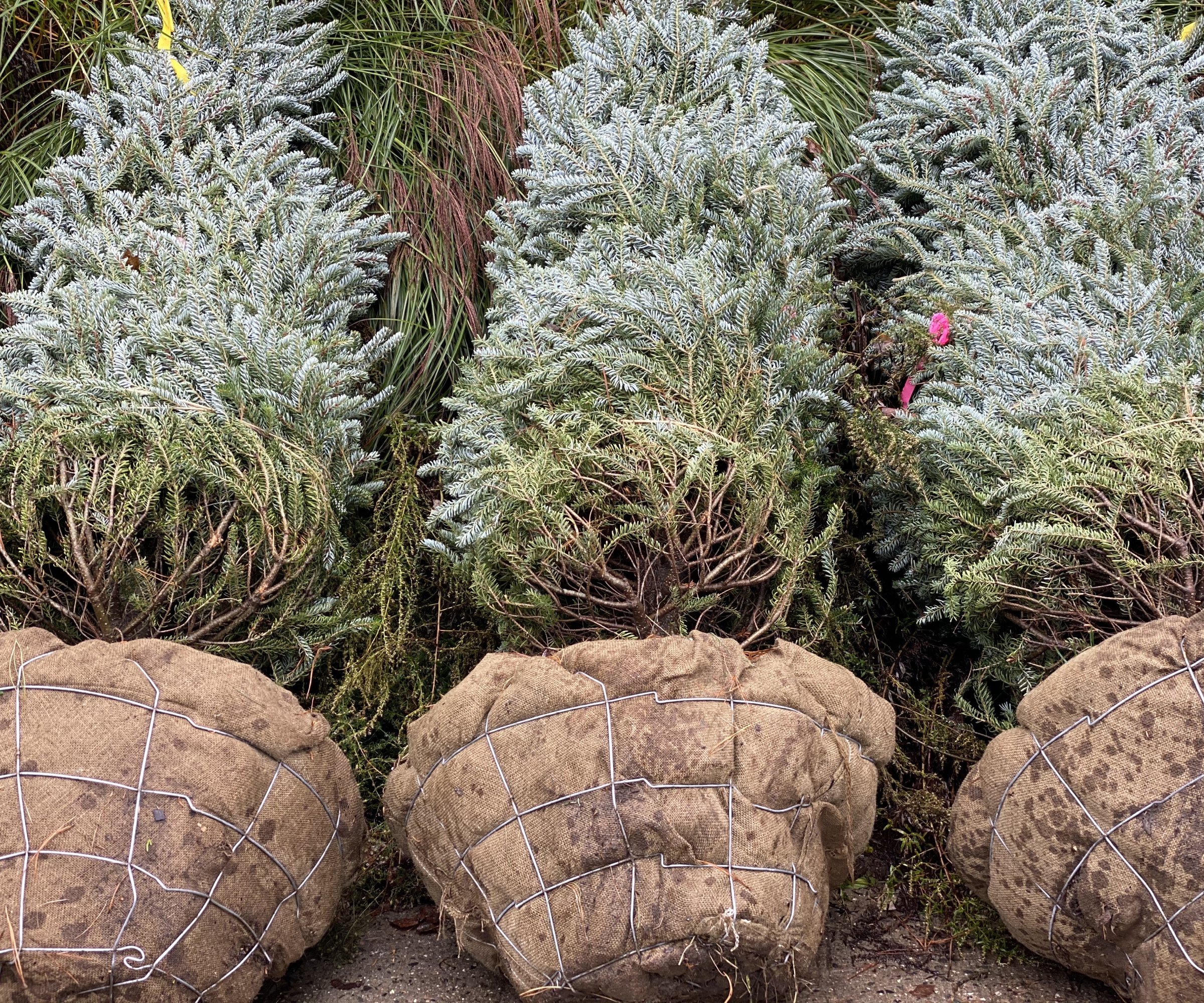Can You Replant A Christmas Tree After The Holidays? Here’s How To Do It Successfully
Christmas is a time to create fond memories and what better way to keep a memento of Christmas than by planting a Christmas tree out in your yard? Here's how.

Liz Baessler

After the holidays end, you may wonder, “can you replant a Christmas tree?” It's a tree, after all, and was once growing out of the ground.
I'm sorry to be the bearer of bad news but no, you cannot replant a cut tree. However, it is possible to plant live potted Christmas trees. As long as you kept it well hydrated while using it for decor, there's no reason it cannot grow on with proper planting and care.
Can You Really Replant a Christmas Tree?

Cut trees will not regrow roots and can therefore not be planted outside. But if you purchased a ball and burlap tree, or one planted in a large container, it is a plantable Christmas tree because it still has roots!
Can you transplant a Christmas tree in the northern climates? Areas where the soil is frozen solid aren’t ideal for transplanting in the winter. But zones that have workable soil are perfect areas to save a Christmas tree outdoors.
In colder climes, you can get a head start by digging a large enough hole before the soil freezes.
If you're planning on planting your Christmas tree outside, it's best to keep it indoors for only 5-7 days. Any longer and it'll become used to the warm interior temperatures and won't tolerate the cold outdoors.
Types of Plantable Christmas Trees

If you plan to save your Christmas tree for the landscape, it must be a Christmas tree with a root ball. Without roots, the project is doomed to failure.
Sign up for the Gardening Know How newsletter today and receive a free copy of our e-book "How to Grow Delicious Tomatoes".
Traditional trees available around the holidays are Douglas fir, Scotch pine, and spruces. Many of these become quite large when they mature, so when you're choosing a Christmas tree, decide if you'll have room for it years down the line.
For the best chance of success, select a tree that's native to your zone. Remember, though, not all trees that are native to your state will be adaptable to your backyard. A home near the coast requires a tree that can withstand winds and salt spray. Some trees grow in higher elevations and will not thrive if your backyard is at a lower elevation. Do a little research and consult with a reputable nursery for guidance.
Prepare Your Tree for Planting
Once you've selected a plantable Christmas tree and the holidays are over, it's time to get the tree ready for its new location!
Move the tree in its container to a cooler location of you home. This could be the basement, or an unheated garage. This process will allow the tree to adjust to lower temperatures, while keeping it sheltered from wind and snow. Let the tree adapt for a week, keeping it watered. If your region is too cold to plant in the dead of winter, just keep the tree it in this spot until spring.
How to Replant Your Christmas Tree

Select a site in sun with well draining soil. Dig a hole twice as wide and as deep as the root ball. Loosen the bottom soil well so the roots can penetrate it with ease.
If the tree is potted, you'll simply need to remove it from its container. Cut any roots that have wrapped around the root ball. If there's synthetic burlap around the root ball, remove this completely. If the burlap is natural, fold down the top ⅓ prior to planting so water can more easily reach the root ball.
Place the tree in the bottom of the hole so the base of the trunk sits flush with the soil level. Fill around the root ball with the removed soil in layers, packing as you go. Water in well to settle the soil around the roots and remove any air pockets. Young trees may require a stout stake to help them grow straight. Apply 2-3 inches ( 5-7.5 cm.) of organic mulch around the root zone.
Caring for a Christmas Tree Outdoors

The newly planted tree will not need fertilizing until spring. When you do add it, a good balanced, time-release fertilizer worked around the soil at the root zone will feed the tree all season.
After planting, keep the soil around the roots moderately moist. If a freeze is expected, make sure the soil is moist to protect the roots from the freeze and thaw cycle. Keep an eye out for pests and diseases.
Some trees require pruning to help them develop a strong leader and remove dead or damaged branches. Over time, the tree will mature and fill out your landscape with evergreen beauty.
Frequently Asked Questions
Can you regrow roots on a Christmas tree?
The woody stem of a Christmas tree will not regrow roots. Some species of plants can grow roots once cut, but these are primarily herbaceous plants.
Can you keep a Christmas tree alive all year?
It is possible to keep the plant in a container all year. However, the trees sold for Christmas are not compatible with indoor life. They get too large and the warm interior temperatures are not suited for most evergreens and conifers. A Norfolk pine is one which will do beautifully indoors. Smaller Christmas trees can be enjoyed in large containers on the porch or patio where they'll be better suited to those temperatures.
This article features products available from third-party vendors on the Gardening Know How Shop.

Bonnie Grant is a professional landscaper with a Certification in Urban Gardening. She has been gardening and writing for 15 years. A former professional chef, she has a passion for edible landscaping.
- Liz BaesslerSenior Editor
